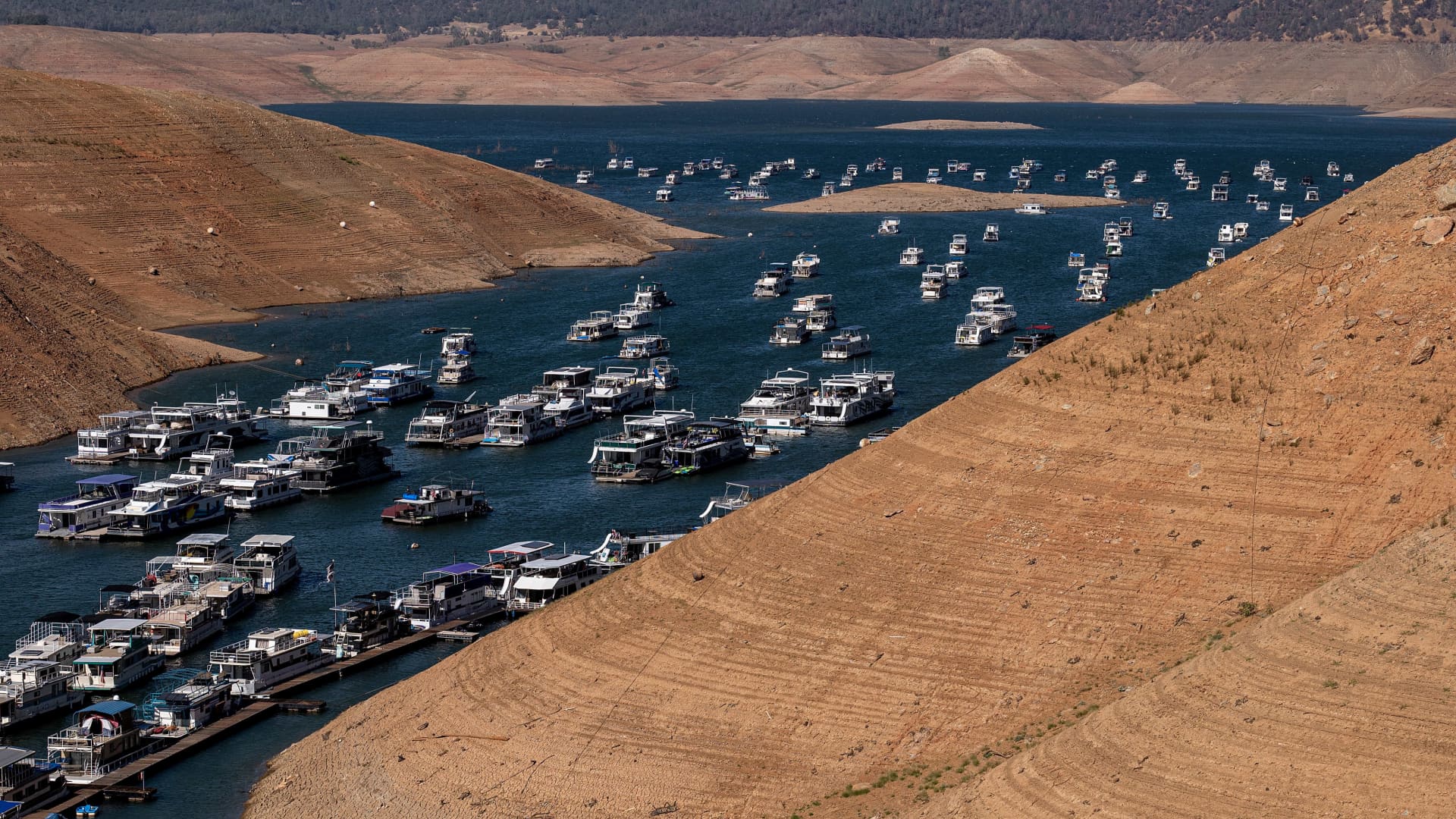
- Lake Oroville, California's second-largest reservoir, has experienced a dramatic rise in water levels after a series of atmospheric river storms in January.
- The storms triggered widespread flooding and damage while boosting the Sierra Nevada snowpack and the state's drought-stricken reservoirs.
- Photos taken in 2021 and 2023 show how much more full the lake is following the storms.

Lake Oroville, California's second-largest reservoir, has experienced a dramatic rise in water levels after a series of atmospheric river storms in January triggered widespread flooding while boosting the Sierra Nevada snowpack and the state's drought-stricken reservoirs.
The lake, which has several reservoirs and canals that supply water to 27 million residents, has reached 68% of its total capacity, up 28% from a couple months ago, according to data from the California Department of Water Resources.
Get top local stories in Southern California delivered to you every morning. >Sign up for NBC LA's News Headlines newsletter.
The boost in water supply comes after Oroville had plummeted to such dire levels that state officials in 2021 responded by shutting down the lake's hydroelectric power plant for the first time since the plant went into operation in 1967.
Previous record-low water levels at Oroville were triggered by drought conditions exacerbated by climate change. While California consistently experiences drought, climate change has fueled especially high temperatures and dry soil that have significantly reduced water runoff into the reservoirs.
Photos taken in 2021 and 2023 show how much more full Oroville is following the January storms:
Intake gates at the Hyatt Power Plant

Enterprise Bridge crosses over the lake

Dry banks rise above Oroville

Houseboats dwarfed by Oroville's banks






